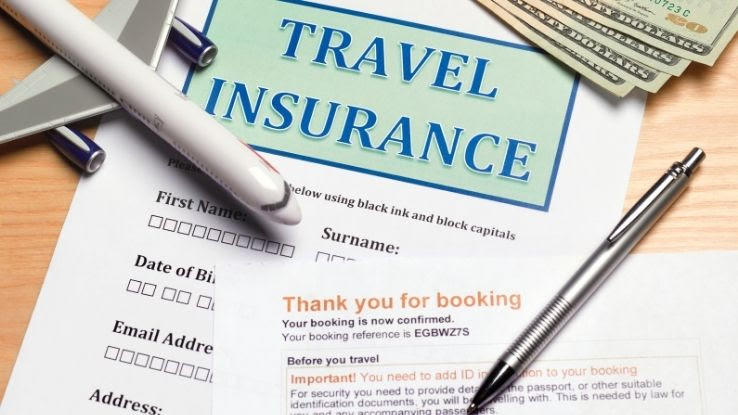The Of Pacific Prime
The Of Pacific Prime
Blog Article
Little Known Facts About Pacific Prime.
Table of Contents7 Simple Techniques For Pacific PrimeIndicators on Pacific Prime You Need To KnowSee This Report on Pacific Prime6 Easy Facts About Pacific Prime ShownPacific Prime - Truths

This is because the information were collected for a period of solid financial efficiency. Of the approximated 42 million people that were without insurance, all but regarding 420,000 (about 1 percent) were under 65 years old, the age at which most Americans become eligible for Medicare; 32 million were adults between ages 18 and 65, around 19 percent of all grownups in this age group; and 10 million were youngsters under 18 years old, about 13.9 percent of all kids (Mills, 2000).
These price quotes of the number of persons uninsured are created from the annual March Supplement to the Existing Population Study (CPS), performed by the Demographics Bureau. Unless otherwise noted, national estimates of people without medical insurance and proportions of the population with different type of insurance coverage are based upon the CPS, one of the most extensively used source of estimates of insurance policy protection and uninsurance rates.
Not known Incorrect Statements About Pacific Prime

Still, the CPS is particularly beneficial since it produces yearly price quotes fairly rapidly, reporting the previous year's insurance policy protection estimates each September, and because it is the basis for a constant set of estimates for even more than twenty years, permitting for analysis of trends in coverage with time. For these factors, along with the considerable use the CPS in other studies of insurance coverage that exist in this record, we count on CPS estimates, with restrictions kept in mind.

The estimate of the variety of without insurance individuals expands when a populace's insurance policy standing is tracked for numerous years. Over a three-year period starting early in 1993, 72 million people, 29 percent of the U.S. https://www.kickstarter.com/profile/pacificpr1me/about. populace, lacked insurance coverage for at the very least one month. Within a single year (1994 ), 53 million individuals experienced a minimum of a month without coverage (Bennefield, 1998a)
Six out of every 10 without insurance adults are themselves employed. Although functioning does boost the chance that a person and one's family participants will have insurance coverage, it is not an assurance. Also participants of households with two permanent breadwinner have virtually a one-in-ten opportunity of being uninsured (9.1 percent without insurance rate) (Hoffman and Pohl, 2000).
Pacific Prime - The Facts
New immigrants represent a substantial proportion of individuals without medical insurance. One analysis has connected a significant section of the recent development in the size of the U.S. without insurance populace to immigrants who showed up in the nation between 1994 and 1998 (Camarota and Edwards, 2000). Recent immigrants (those who involved the United States within the previous 4 years) do have a high price of being without insurance (46 percent), yet they and their children represent simply 6 percent of those without insurance policy across the country (Holahan et al., 2001).
The relationship in between medical insurance and accessibility to care is well developed, as recorded later in this chapter. Although the relationship between health and wellness insurance coverage and wellness end results is neither straight nor simple, a considerable professional and wellness solutions study literary works links health insurance protection to better accessibility to care, much better high quality, and enhanced personal and population health and wellness standing.
Levels of evaluation for taking a look at the effects of uninsurance. It concentrates specifically on those without any type of health and wellness insurance for any kind of length of time.
Pacific Prime - Truths
The Homepage problems encountered by the underinsured are in some areas similar to those faced by the without insurance, although they are normally less severe. Health insurance, nonetheless, is neither required nor enough to obtain access to clinical services. The independent and straight impact of health insurance policy coverage on accessibility to health and wellness services is well developed.
Others will obtain the wellness care they require even without medical insurance, by paying for it out of pocket or seeking it from service providers that use treatment complimentary or at highly subsidized prices. For still others, medical insurance alone does not guarantee invoice of care due to the fact that of other nonfinancial barriers, such as a lack of wellness care providers in their neighborhood, minimal access to transport, illiteracy, or linguistic and cultural distinctions.
Getting My Pacific Prime To Work
Official research regarding without insurance populaces in the USA dates to the late 1920s and very early 1930s when the Committee on the Cost of Treatment generated a collection of records concerning financing doctor office brows through and hospitalizations. This problem ended up being significant as the varieties of clinically indigent climbed up throughout the Great Anxiety.
Report this page